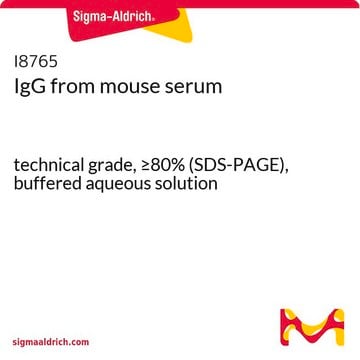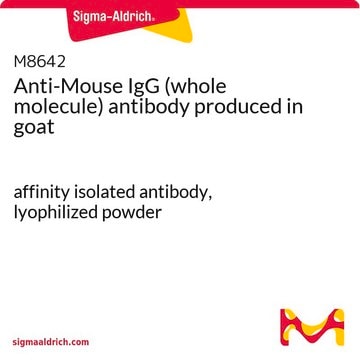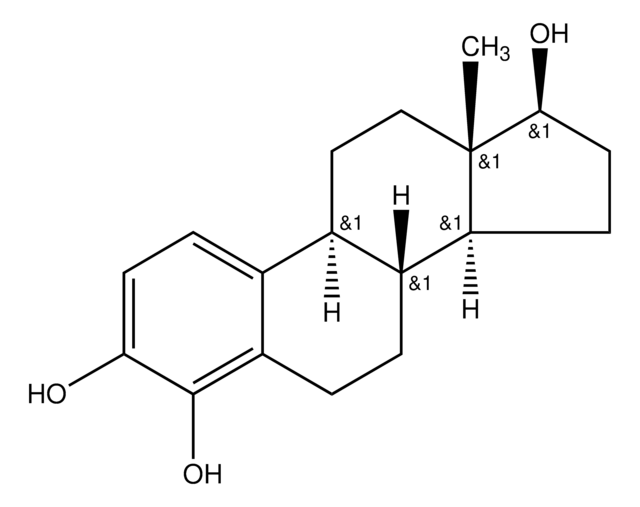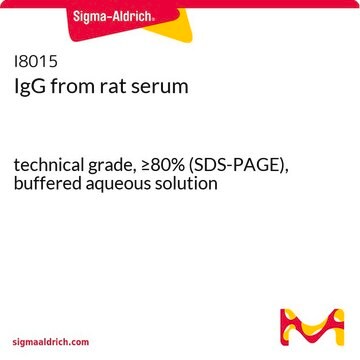I5381
IgG from mouse serum
reagent grade, ≥95% (SDS-PAGE), lyophilized powder
Synonyme(s) :
Mouse IgG
About This Item
Produits recommandés
Conjugué
unconjugated
Qualité
reagent grade
Pureté
≥95% (SDS-PAGE)
Forme
lyophilized powder
Composition
Protein, ≥80%
Température de stockage
2-8°C
Modification post-traductionnelle de la cible
unmodified
Vous recherchez des produits similaires ? Visite Guide de comparaison des produits
Description générale
Mouse IgG is purified from normal mouse serum by fractionation and ion-exchange chromatography.
Application
Forme physique
Clause de non-responsabilité
Code de la classe de stockage
11 - Combustible Solids
Classe de danger pour l'eau (WGK)
WGK 3
Point d'éclair (°F)
Not applicable
Point d'éclair (°C)
Not applicable
Équipement de protection individuelle
Eyeshields, Gloves, type N95 (US)
Certificats d'analyse (COA)
Recherchez un Certificats d'analyse (COA) en saisissant le numéro de lot du produit. Les numéros de lot figurent sur l'étiquette du produit après les mots "Lot" ou "Batch".
Déjà en possession de ce produit ?
Retrouvez la documentation relative aux produits que vous avez récemment achetés dans la Bibliothèque de documents.
Les clients ont également consulté
Contenu apparenté
Access high-quality reagents for antibody workflows, including adjuvants, blocking reagents, conjugation kits, and more.
Notre équipe de scientifiques dispose d'une expérience dans tous les secteurs de la recherche, notamment en sciences de la vie, science des matériaux, synthèse chimique, chromatographie, analyse et dans de nombreux autres domaines..
Contacter notre Service technique











